Agile Recruitment: A Smarter Way to Hire Talent

TL;DR
- Breaks hiring into short sprints for faster results.
- Adapts quickly to changing role requirements.
- Improves collaboration between recruiters, managers, and stakeholders.
- Uses tools like ATS and Kanban boards for tracking.
- Speeds up hiring by up to 60%.
- Boosts candidate experience through better communication.
- Relies on constant feedback to refine the process.
- Works best for fast-changing industries or high-volume hiring.
- Needs team buy-in and clear communication to succeed.
You’ve likely heard of “agile” in the context of software development, but did you know it’s also revolutionizing recruitment?
Agile recruitment breaks hiring into short cycles, letting teams pivot quickly when roles evolve, maintain better alignment across stakeholders, and continuously improve their results. Unlike traditional linear approaches, this iterative method creates a responsive hiring process that actually adapts to your changing needs, keeping you fast, flexible, and ahead of the talent competition.
The impact is clear: companies implementing agile recruitment have shortened their hiring cycles by as much as 60%. That means faster hires, more engaged candidates, and ultimately, a more efficient recruitment process overall.
Struggling to make your hiring process faster and more efficient? Agile recruitment might be the solution you’ve been searching for.
This blog will break down everything you need to know – what agile recruiting really means, why it’s worth trying, and how to make it work for your team. Without further ado, let’s dig in.
What is Agile Recruitment?
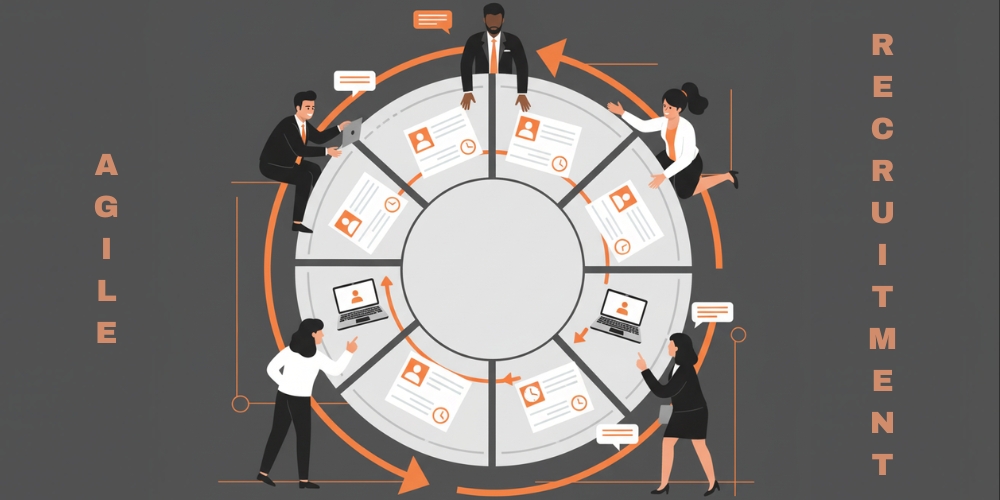
Agile recruitment is a dynamic, flexible approach to hiring that focuses on adapting to the changing needs of the business while continuously improving the hiring process
In its essence, agile recruitment is based on three pillars: processes, teams, and technology.
- Processes: Similar to software development, the recruitment process is divided into smaller, yet manageable, phases, or “sprints.” Your recruitment team is able to focus on individual tasks, improve in the process, and adjust to new requirements as they emerge. Regular check-ins and reviews keep the process on track and continuously improve for greater efficiency.
- Teams: Agile recruiting relies on team collaboration. Every member has a specific role, ranging from hiring managers who identify the requirements to recruiters who carry out the work. The agile team communicates often, with all members in close collaboration, ensuring everyone is on the same page and working toward the same thing: acquiring the right talent within a shorter timeframe.
- Technology: The right tools make all the difference in keeping agile hiring on track. An ATS or HRIS cuts through the chaos by organizing candidates, tracking progress, and turning data into smarter decisions. And with collaboration tools like Kanban boards for workflow and video interviews for seamless screenings, your team stays perfectly in sync, no matter where they’re working from. They cut out the busywork so your team can focus on finding great hires.
Agile Speed Check
Answer five quick choices. See your score and get tips you can use today.
You must fill one role fast. What helps more right now?
Feedback is late. What should the team do?
The role changes mid search. What now?
Too many tasks on one day. What helps flow?
How do you learn and improve each week?
Traditional Recruitment vs. Agile Recruitment
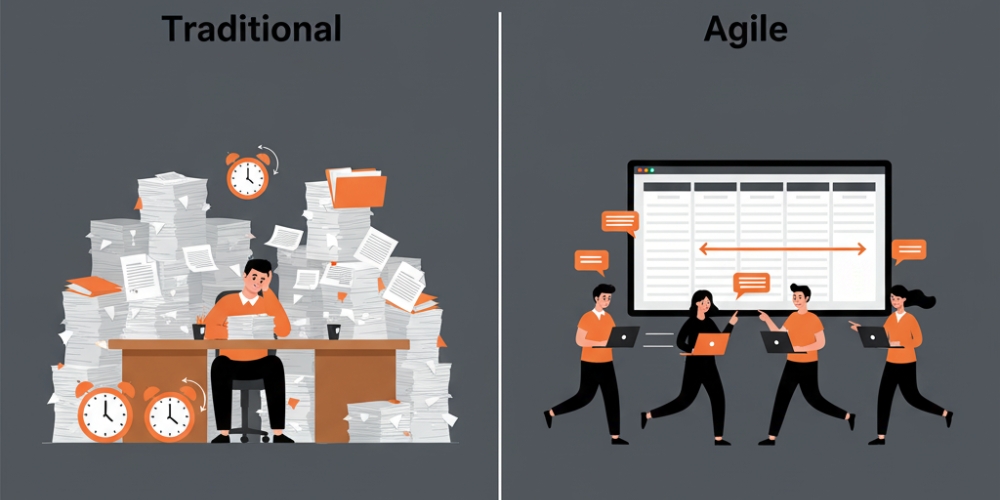
Traditional recruitment works like an old train schedule, linear, slow, and hard to change once it starts moving. You post a job, wait for applications, schedule interviews and hope everything runs on time. If the hiring manager changes their mind halfway or a new role appears, the whole process hits a wall. It’s rigid, full of delays, and often leaves both recruiters and candidates frustrated.
Agile recruitment flips that script. Instead of waiting for everything to be final, it moves in short, focused cycles called sprints. Each sprint handles a part of the hiring process like sourcing, screening, or interviewing and adjusts based on feedback from the team or candidates. This means if something’s not working, the team changes it on the fly instead of waiting until the end.
Traditional recruitment is all about plans while agile recruitment is about progress. The first relies on predictability, the second thrives on flexibility. In today’s fast-paced hiring world, that difference decides who fills roles faster and who keeps losing great talent to competitors.
Spot the Bottleneck Challenge
Tap each step to reveal a hidden issue on the left and a simple fix on the right.
Traditional workflow
Agile workflow
Use the Reveal buttons to show tips for each step. Use Reveal all to open all tips. Use Reset to close them.
Why Integrate Agile Recruitment?

Traditional recruitment methods just don’t cut it anymore. Agile recruitment helps you keep up with the speed of change, adapt quickly, and improve the overall efficiency of your hiring process.
Here’s the deal:
Faster Hiring Processes
Conventional recruitment procedures can take an eternity, frustrating both recruiters and candidates. Agile recruitment enables you to divide things into smaller tasks such as imposing fast deadlines for interviews or following up with candidates regularly. This keeps things moving quicker, so you don’t miss out on the best talent.
Real-Time Feedback
Feedback is everything in agile. By doing work in sprints, you will have consistent checkpoints to review progress, take in insights, and make course corrections immediately. Let’s say you’re off-course on the candidate search. You can shift gears without losing valuable time or resources, so you end up finding the right candidate sooner.
Improved Candidate Satisfaction
Agile recruitment puts communication front and center. With quicker response times and regular updates, applicants feel more appreciated during the process. Not only does this make their experience better, but it also strengthens your employer brand, demonstrating to applicants that you value their time and experience.
Maximized Recruitment Productivity
Agile hiring promotes collaboration among all parties. Through mutual feedback on candidates and task prioritization, recruitment teams remain on the same page. This makes things move smoothly and effectively.
Adaptability to Changing Demands
The hiring needs can change overnight. With agile recruitment, you’re not stuck playing catch-up when sudden hiring spikes hit or urgent roles pop up. It’s like having a recruitment process that can pivot as fast as the market does – so you’re always ready, not scrambling.
Recruiter’s Stopwatch Quiz
Test your agile reflexes. Beat the timer before it runs out!
Ready to test your speed and adaptability? You’ll have 10 seconds for each question.
How to Implement an Agile Recruiting Process
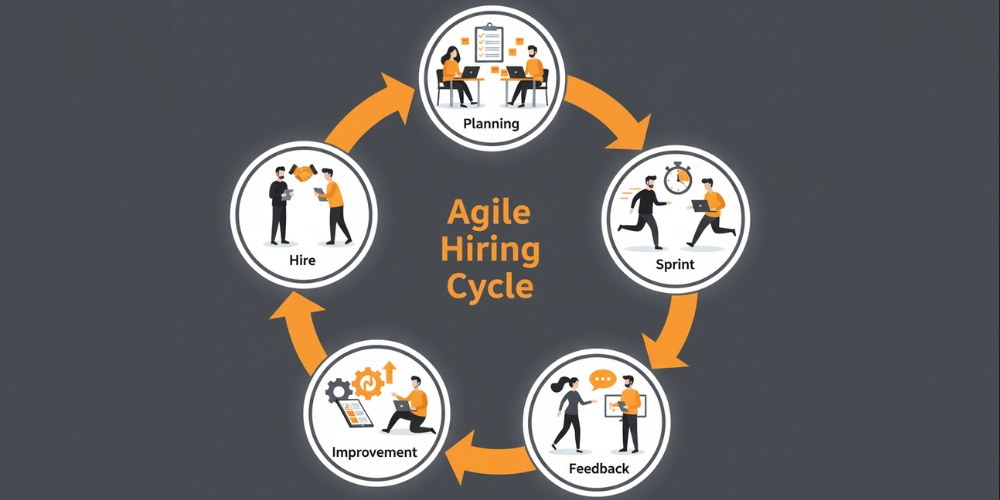
Recruiting the best-of-the-best talent in the current competitive job market demands more than being fast; it demands flexibility, teamwork, and improvement. That’s where Agile recruiting steps in. It focuses on iterative processes, ongoing feedback, and team coordination to maximize hiring results.
Understand Agile Principles in Recruitment
Agile recruitment’s fundamental principles are:
- Iterative cycles of hiring with regular appraisals
- Cross-functional team effort involving HR, hiring managers, and departments
- Ongoing feedback for enhancing candidate experience as well as team performance
- Flexibility to adapt to changing hiring needs
Create Cross-functional Hiring Squads
Form small, collaborative teams made up of recruiters, hiring managers, and key stakeholders. These “squads” own the entire recruitment cycle for specific roles or departments, making decisions faster and reducing silos.
Break the Process into Sprints
Ditch the long, drawn-out hiring plan. Break the process into quick 1-2 week sprints instead. Each sprint can focus on key tasks like:
- Screening resumes
- Setting up interviews
- Gathering feedback
- Moving candidates forward
Use Kanban Boards or ATS Tools for Visibility
Leverage a visual tracking system (e.g., Trello, Jira, or a Kanban-style ATS) to manage your talent pipeline. Columns like “Sourced,” “Interviewing,” “Offer Extended,” and “Hired” help teams see where each candidate stands at a glance.
Implement Daily or Weekly Stand-ups
Quick daily or weekly sync-ups keep the team on track, address any roadblocks, and maintain momentum. Think of these like Agile stand-ups – short, focused, and to the point.
Incorporate Continuous Feedback
Gather feedback after each stage of the hiring process from both candidates and team members. This helps refine your approach, identify bottlenecks, and enhance the candidate experience.
Set Metrics and Iterate
Use these insights to continuously improve your process and align it with business goals.
Measure KPIs like:
- Time-to-hire
- Quality of hire
- Candidate satisfaction
- Offer acceptance rate
Encourage a Culture of Flexibility
Agile recruiting works best when teams embrace change. It’s about trying new approaches, adjusting course when needed, and actually listening to feedback – even when it means changing how things have always been done.
Agile Roadmap Puzzle
Unlock each stage to complete the loop. Tap a tile to reveal a tip.
Select a stage tile to unlock it and reveal a tip. Unlock all five stages to complete the loop.
Pros and Cons of Agile Recruitment
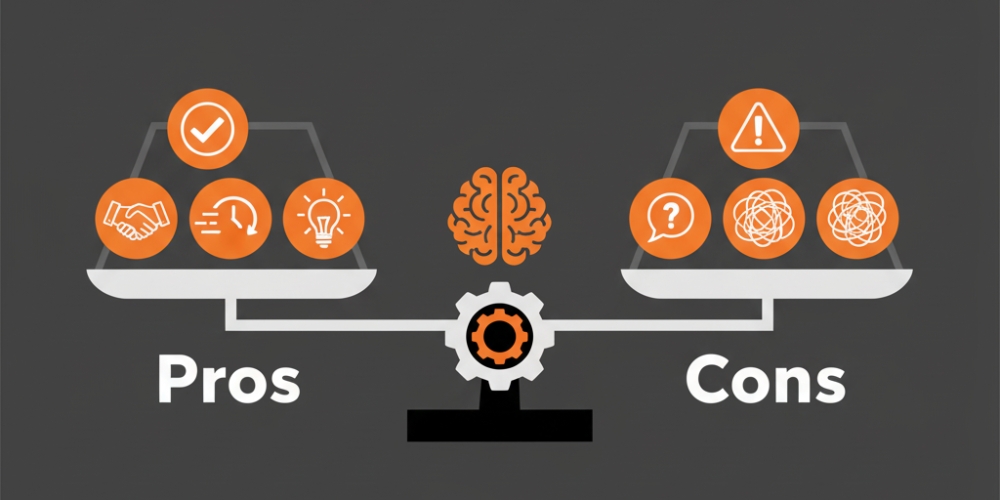
Agile recruitment sounds exciting but like every strategy, it comes with its strengths and drawbacks. Knowing both helps you decide whether it fits your hiring needs or not.
Pros of Agile Recruitment
1. Faster Hiring Cycles
Breaking the hiring process into smaller sprints makes it easier to identify bottlenecks and fix them quickly. You end up hiring faster without compromising on quality.
2. Better Collaboration
Agile thrives on teamwork. Recruiters, hiring managers and department heads stay in sync, which reduces confusion and improves communication throughout the process.
3. Improved Candidate Experience
When candidates get quick replies and steady updates, they feel respected. It builds trust and shows that your company values people, not just positions.
4. Ready for Change
Roles shift, teams grow and goals evolve. Agile hiring bends with the changes instead of breaking under them. You can adjust mid-hire without losing momentum.
5. Data-Driven Improvement
Regular check-ins and sprint reviews make it easier to track key metrics like time-to-hire and quality of hire. This helps you refine your process over time.
Cons of Agile Recruitment
1. Resistance to Change
Teams used to traditional hiring may find agile’s pace and collaboration demanding at first. Proper training and mindset shifts are needed to make it work.
2. Risk of Communication Gaps
If teams do not communicate clearly or skip meetings, important details can fall through the cracks, affecting hiring quality.
3. Overreliance on Tools
While tools like Kanban boards or ATS platforms help, depending on them too much can create complexity instead of clarity if not managed well.
4. Time Commitment from All Teams
Agile requires everyone’s involvement. When stakeholders skip their part, the process loses momentum and outcomes suffer.
5. Harder to Scale Without Structure
For very large organizations, maintaining the balance between agility and structure can be tricky. It needs strong coordination to avoid chaos.
Agile recruitment is not perfect, but when applied thoughtfully, its pros far outweigh the cons. It’s not about replacing everything old but about working smarter, adapting faster, and hiring better.
Flip Card Reality Check
Tap a card to flip it. Shuffle for a new order. Filter to focus.
Each card has a front with a short line and a back with an explanation. Use the filter to show pros or cons. Use shuffle to change the order.
How to Determine if Agile Recruitment is for You?
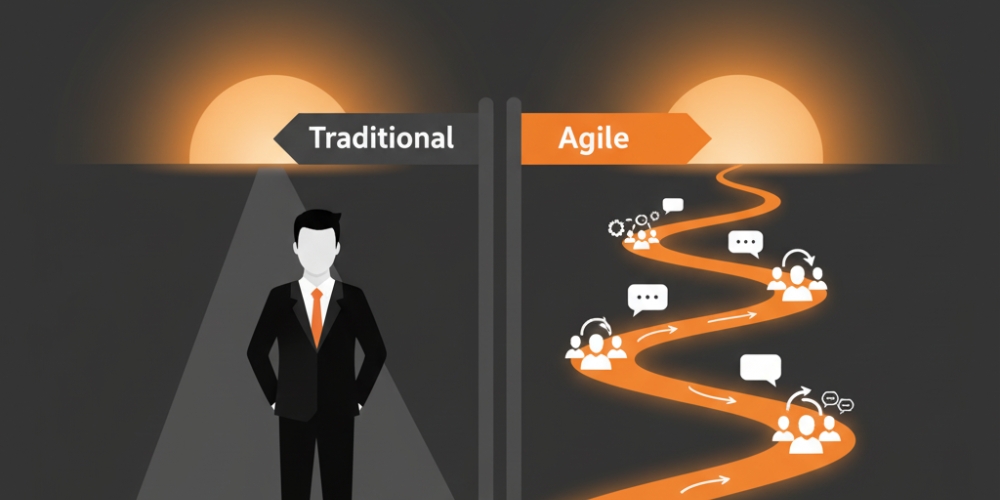
Consider the following factors to determine if agile recruitment aligns with your organization's needs:
You Hire Frequently or at Scale
If you’re always posting new roles or scaling quickly, agile hiring keeps you from drowning in chaos. Think of it like a playlist you tweak weekly - sprint cycles help you reprioritize fast and keep candidates moving smoothly through your pipeline.
You Work in a Fast-Changing Industry
Tech, startups, marketing, you know, jobs evolve overnight. Agile lets you pivot faster than a TikTok trend, so you’re not stuck hiring for yesterday’s needs.
You Value Team Collaboration
If your process requires sign-offs from 17 people, agile’s collaborative huddles cut the back-and-forth. Less “waiting on legal,” more “let’s align and decide today.”
You Want to Improve Candidate Experience
Agile focuses on transparency and regular feedback, which can lead to a smoother, more engaging experience for candidates. Happy candidates are more likely to become happy employees.
You’re Data-Driven
If you like making decisions based on metrics like time-to-hire or candidate satisfaction, agile’s iterative nature makes it easier to track and improve your recruitment process over time.
Agile Fit Meter
Answer five quick questions. See if Agile fits your team right now.
Your hiring needs change week to week.
Select an option for each question. Use Next to continue. After five answers you will see your fit level and tips.
Conclusion
Agile recruitment isn’t just hype; it’s how modern teams hire without the headaches.
When you hire in sprints, stay in sync with your team, and tweak things based on real feedback, roles get filled quicker, and candidates actually enjoy the process.
Sure, it takes buy-in and the right tools, but if you’re tired of rigid processes that can’t keep up, agile turns hiring from a chore into a competitive advantage. The future’s unpredictable; your hiring process shouldn’t be.
Ask the Agile Coach
Click a question. Watch the chat appear with a clear answer.
Use the buttons to expand a question. The chat shows your message and a coach reply. Reveal all shows every answer. Reset clears the chat.
See a Jump in Candidate Engagement—Real-Time Strategy in Action
Best practices are nice, but actions get results. Vettio’s real-time strategy tools drive up candidate engagement and cut recruitment cycles —no extra effort required.
Visit Link





